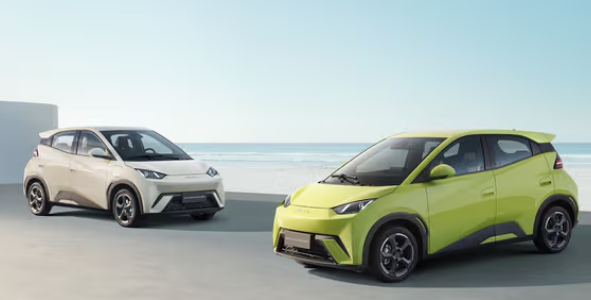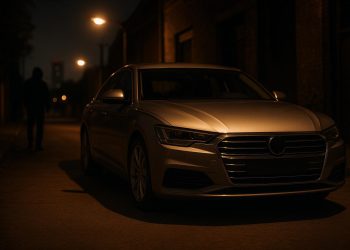Electric mobility in South Africa has often been held back by one major obstacle: pricing. With high import taxes and tariffs, most EVs have been priced far above what the average buyer can afford. But change is on the horizon. Enter the BYD Atto 1 (also known as the Dolphin Mini or Dolphin Surf in other markets), which is set to launch in South Africa in September 2025 as the country’s most affordable electric vehicle — with a price expected to rival that of the ever-popular VW Polo Vivo, under R350,000.
If BYD delivers on this promise, the Atto 1 could mark a turning point in South Africa’s EV adoption. Here’s what you need to know.
Compact Size, Surprising Space
The Atto 1 is roughly the same size as a Mini Cooper, measuring 3,990 mm long and 1,720 mm wide. Despite its compact footprint, the interior is cleverly packaged and feels more spacious than you’d expect in this price bracket.
On first impressions, the design is sharp and modern, making it stand out from the small-car crowd. Inside, while some plastics feel basic, the overall finish is well above what South African buyers are used to seeing in cars below R350,000 — especially with features like BYD’s signature rotating infotainment screen.
Powertrain and Battery Options
The Atto 1 will be available with two Blade battery sizes, known for their durability and safety:
- 30 kWh battery – 65 kW output, 0–100 km/h in 11–12 seconds, range up to 220 km (CLTC).
- 42.2 kWh battery – 115 kW output, 0–100 km/h in 9.1 seconds, range up to 322 km (CLTC).
According to WLTP urban-cycle testing, BYD claims an impressive 507 km urban range on the higher-spec battery, which is more than enough for daily commuting in South African cities.
Charging Capabilities
One of the biggest highlights of the Atto 1 is its fast-charging ability, rare in this price category:
- 30 kWh model – DC fast-charging 20–80% in just 16 minutes, or about 2.5 hours on AC home charging.
- 42.2 kWh model – Accepts up to 85 kW DC charging, enabling quick top-ups at malls and service stations.
This means urban drivers can realistically keep the Atto 1 charged without the need for home solar or expensive wall-box chargers, though those will improve convenience.
Real-World Driving and Impressions
During the first test drives at BYD’s facility in Zhengzhou, the Atto 1 felt adequate for South African roads, even when simulating overtaking. While it won’t rival high-performance EVs, its instant torque delivery makes city driving lively and stress-free.
Inside, some hard plastics remind you of its budget positioning, but the rotating infotainment screen, modern cabin layout, and tech features make it feel far more premium than expected at this price.
Running Costs and Long-Term Value
One of the most exciting aspects of the Atto 1 is its potential to transform South Africa’s used-car market:
- Lower running costs: Home charging is far cheaper than refueling with petrol, and EVs require significantly less maintenance.
- Battery longevity: An 8-year battery warranty with an expected 12–15 year lifespan reduces long-term ownership risks.
- Depreciation benefits: In 3–5 years, used Atto 1 models could enter the market around R200,000 or less, making EV ownership accessible to even more buyers.
Why the Atto 1 Matters for South Africa
The BYD Atto 1 isn’t just another compact EV; it’s a potential game-changer:
- Affordability: Finally, an EV priced in the same league as South Africa’s most popular entry-level cars.
- Urban practicality: Compact size, excellent range for city use, and ultra-fast charging.
- EV adoption boost: With lower upfront and running costs, it could encourage more South Africans to embrace electric mobility.
For South Africans who have long wanted an EV but couldn’t justify spending close to a million rand, the Atto 1’s arrival is the light at the end of the tunnel.
FAQs About the BYD Atto 1 (2025)
Q1: When will the BYD Atto 1 launch in South Africa?
The Atto 1 will officially launch in September 2025.
Q2: How much will it cost?
Final pricing is yet to be confirmed, but it’s expected to come in at under R350,000, making it South Africa’s cheapest EV.
Q3: What are the battery options?
Two versions will be available: a 30 kWh battery (65 kW output) and a 42.2 kWh battery (115 kW output).
Q4: How fast does it charge?
The 30 kWh model charges from 20–80% in about 16 minutes on DC fast charging. The 42.2 kWh version supports up to 85 kW DC charging.
Q5: What is the real-world range?
Depending on the model, expect 220 km–322 km (CLTC) or up to 507 km urban (WLTP), which is ideal for city commuting.
Q6: Will the Atto 1 be practical for families?
While compact, its clever interior design offers more space than expected, making it suitable for small families or as a second city car.
Final Thoughts
The BYD Atto 1 (2025) could become South Africa’s first truly affordable EV, opening the door for thousands of buyers who previously found electric cars out of reach. With modern styling, practical range, ultra-fast charging, and low running costs, it has all the makings of a best-seller.
If BYD delivers on its promise of pricing below R350,000, the Atto 1 won’t just be South Africa’s cheapest EV — it could be the car that finally brings electric mobility to the mainstream.





